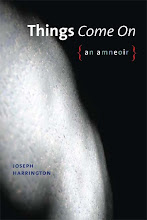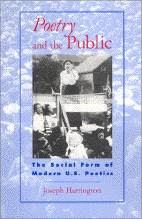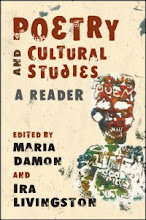Poets often personify abstractions, but rarely is the abstraction a series of mathematical formulae. But the protagonist of Sasha Steensen’s The Method is a cross between:
- Caliban
- The 10,000-Year-Old Man
- Frankenstein’s Monster
- Henry.
[I felt vindicated in this last observation when I saw the poem “A Second Offence for John Berryman”]
But it’s not his fault (& he is male – Archimedes conjured him, after all). He’s the Mathematician’s golem, starting life as a founding document of rationalism, and ending up as scrap-parchment for a monk to write “a prayer book for sick and unclean spirits upon.” Now M. is a tattooed palimpsest (and a commodity, passing from hand to hand).
If you could give me the right place to stand, I could lift this book with a lever (not that it's big, just dense). If you can’t – well, I ain’t that smart. I can say what I like about this book, which is its incredibly inventive use of language (look – I’m referring to a book as a character!). Not to mention its variety of forms: closed form, open form, columns, prose discursus.
Now comes that moment that explains why I don’t write many real book reviews. How does one pick the one or two extra-special passages that truly exemplify the heart and soul of a book – the Ultimate Synechdoche?
Hmm – esp. hard to do, with such a multiform book with a multiform absent center. So I’ll revert to the list, one of my favorite forms:
From “The Complete Sentence for My Father”
This is a complete sentence.
Does not frighten me.
The story of the dwarf,
confined forever,
to a complete sentence,
for his robbery, robby. . . .
He’ll be left
behind. behead.
ed.
When we watch
the dwarf
take a page.
Completely for the Method.
If we say, Stop!
That is a complete
sentence . . .
[And what poet doesn’t have a father who’s said “So whattaya, afraid of writing complete sentences or something”?]
From “The Future of an Illusion”:
“In the distance, I hear America swimming. It is a hot day, and we are circling the island. They find his inflatable crocodile humorous, and they point and chuckle among themselves. Method began to keep track of such embarrassments by writing a Souda, a compilation of compilations. In it he includes etymological ponderings, such as the relationship between ‘moor,’ to secure a ship, and the Moors. A ship is moored when she rides by two anchors. Mooring chains and Morning chains, he chants softly as he floats.”
Like the future (and the present of much US poetry), this poem is floating away.
No? OK, try “Me Thee Odes”:
He is his own he.
He is.
His is dead and gone,
and his comes along
very scary. Boo
hoo.
His is one too many.
He is an object that looks like an object.
I love an object that looks like an object.
He is an object that looks like an object.
He is not.
See? Those excerpts give a completely distorted idea of this book. OK, that’s enough. But I’m not going to tell you how many poppyseeds it takes to fill the known universe.
Where is the “known universe,” anyways?
For Sweetie
-
I won't post my last photos of Sweetie; they were taken for the Humane
Society. She lived in a fenced-off cement lanai about the size of the box
I'm writi...
4 hours ago










